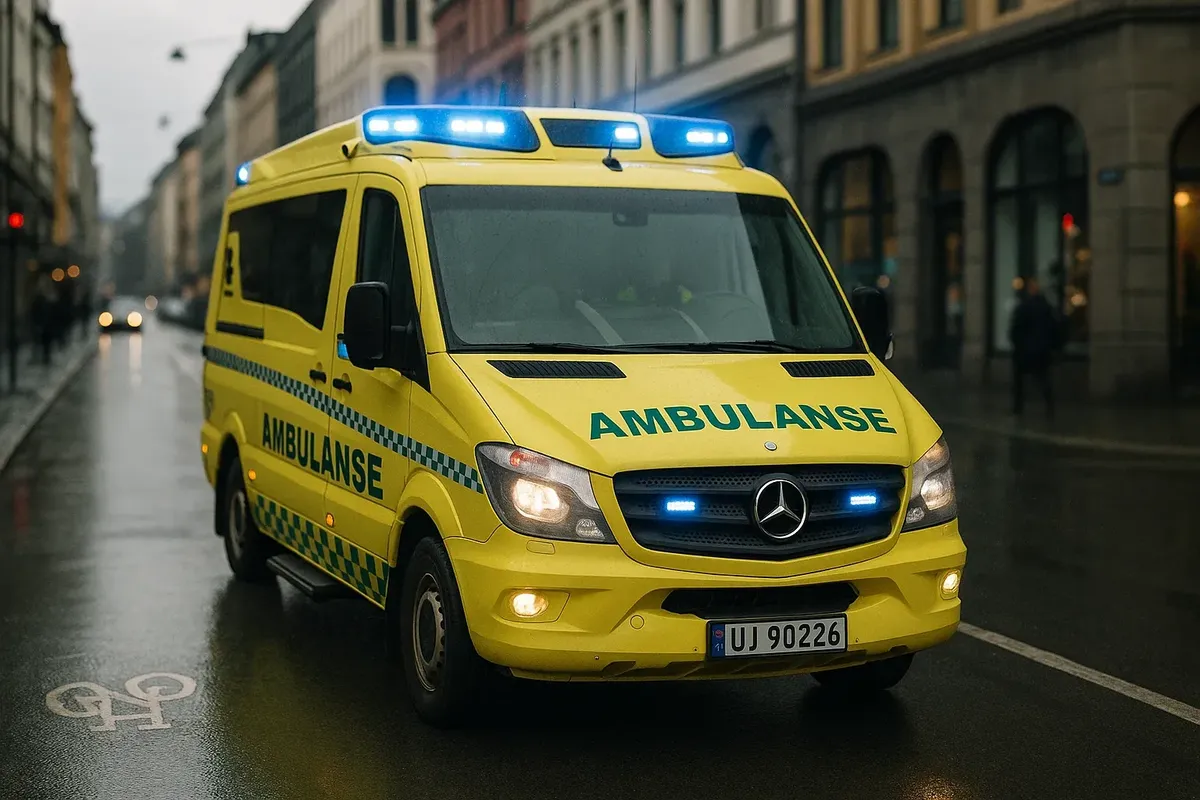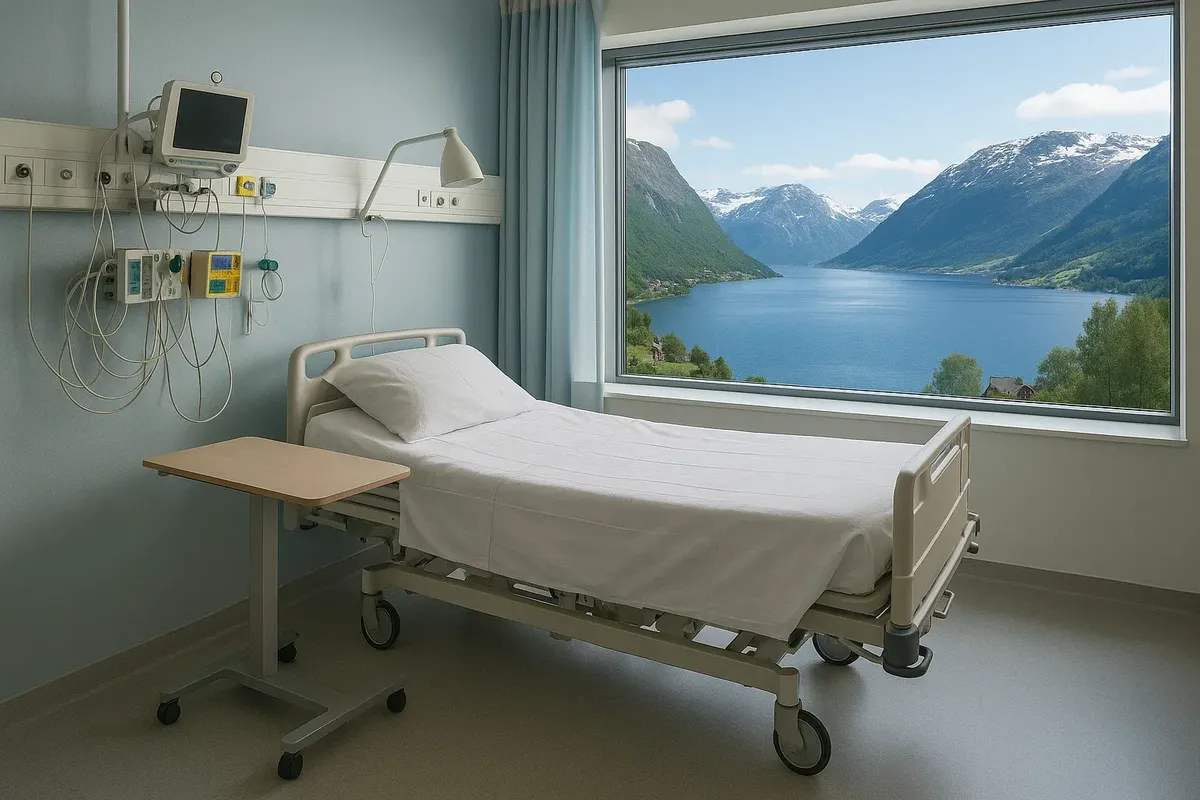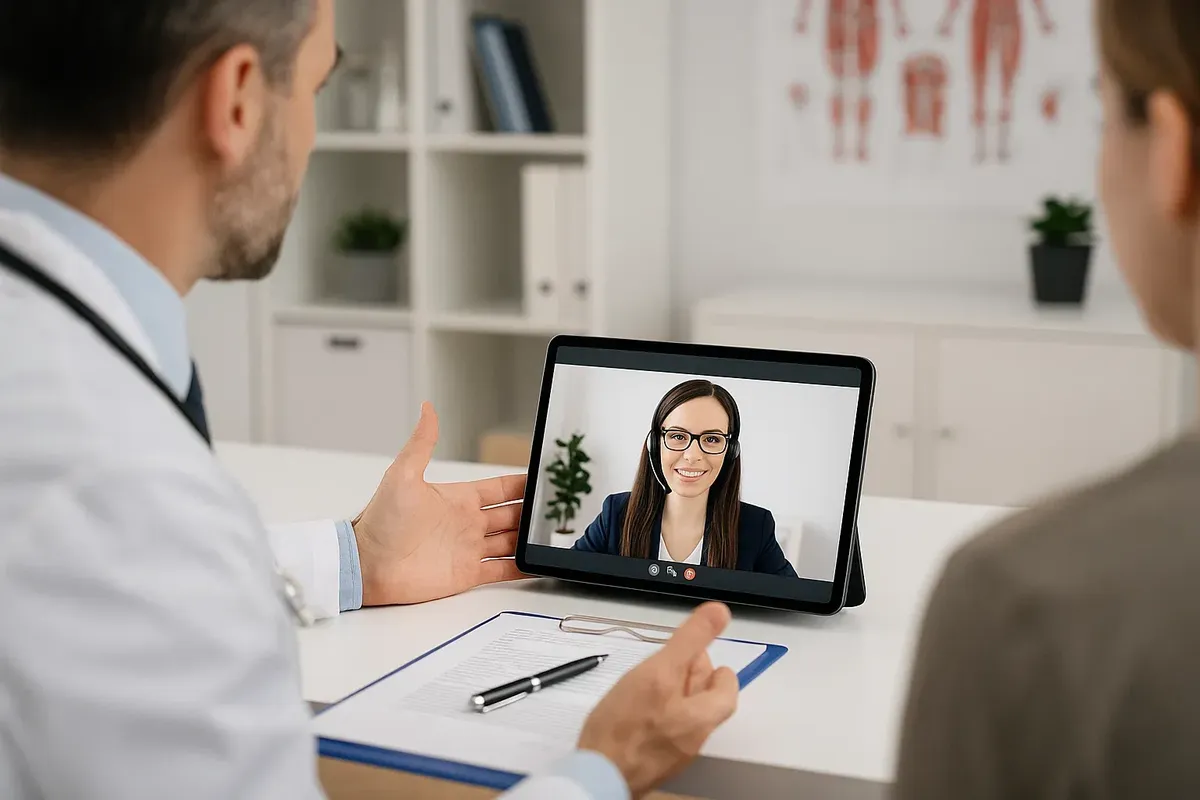🚑 Emergency assistance in Norway: how not to get lost in a critical situation? 🧭
Any country can have a health emergency, including Norway. Even though the medical facilities are good, it is important to know how to call an ambulance, how to speak to doctors without knowing the language, and what costs you can expect if you do not have insurance. In this article, we answer 10 questions about being in hospital, paying for it and talking to doctors in emergencies in Norway.
What should I do if I need to call an ambulance in Norway but I don't speak Norwegian?
If you need urgent help in Norway, call 112 (Europe's emergency number) or 113 (medical help). Operators must speak English, and if you don't speak English, they will connect you to an interpreter via a conference call. Tell them you are a foreign tourist ('foreigner, need ambulance'), say where you are exactly (address, coordinates or Google Maps Plus Code) and describe your symptoms. The dispatcher will decide if a regular ambulance or an air ambulance is needed. Make sure you have your passport and insurance with you — you'll be asked for them when you arrive. You will still receive help even if you don't have all your documents, but you will have to pay later.

How much does a night in a Norwegian hospital cost if you don't have insurance?
If you go to hospital in Norway without insurance, it will cost a lot of money. In the summer of 2025, the average cost for a non-resident to stay in a regular ward was between NOK 15,000 and NOK 18,000 per bed per day. The cost for an intensive care unit was between NOK 25,000 and NOK 30,000 per bed per day. These amounts include meals, normal medicines and medical tests. Other procedures (like surgery, MRI scans and haemodialysis) are paid for separately. If you don't have insurance, the hospital will usually ask for a deposit of around 50,000 NOK by bank card. Keep hold of all your documents so that you can give them to your insurance company later and get paid if your insurance is approved retrospectively.

Can I choose which hospital I'll go to in an emergency?
In Norway, patients are always taken to the nearest hospital that can provide the right medical care (the 'closest adequate facility'). However, if you have a Premium insurance policy with the 'hospital of choice' option, you can choose your preferred hospital in advance (e.g. Oslo University Hospital or Haukeland Bergen). If your condition is stable after first aid, the insurance company will arrange transfer to the selected clinic for free. Without insurance, transferring someone between regions by helicopter or ambulance will cost between 10,000 and 40,000 NOK. So, it's better to add this option to your policy in advance (which will cost approximately €6 per week).
What should I do if I don't speak English or Norwegian and need to speak to a doctor?
Large hospitals in Norway provide free video translation in 40 languages, including Russian, through the Norsk Tolk service. When you arrive, just ask for the 'interpreter service' and the medical staff will connect you to an interpreter via a tablet. In smaller clinics, interpreters are paid 450 NOK for the first 20 minutes and 18 NOK for each additional minute. Here's a helpful tip: download the iTalk Medic RU-NO app before you travel. It contains medical phrases translated into Norwegian. Insurance companies often pay for an interpreter if it's needed for treatment, so keep your receipts and attach them to your claim.

Do I have to pay for an initial examination at the emergency room (Legevakt)?
If you are a tourist without a European EHIC card, you will have to pay NOK 1,235 to be examined at the Legevakt emergency department. This includes a doctor's check-up, some blood tests and an X-ray (for example, of the arms or legs). EHIC holders only pay NOK 336 (the patient fee). Insurance companies usually pay for services directly, but Legevakt may temporarily hold this amount on your bank card as a deposit. The receipt (kvittering) is an important document that you will need to get more of your money back from your insurance company.
If I don't have the money, can they still treat me?
No, Norwegian law (Specialist Health Services Act § 3-1) says that medical institutions can't turn away emergency care because of money. The patient will be treated and given first aid, even if they do not have insurance or money. After we help you, we will send you an invoice to pay. You have 60 days to pay. If you don't pay, the debt will be sent to a collection agency and you may be taken to court, even in your own country. The debt may affect your ability to get visas in the future, so it's really important to get medical insurance before you travel.
How long are medical records kept for, and how can I get them?
In Norway, electronic patient records (EPJ) are kept for at least 10 years. Residents can access their records via their bank ID on the On Patient Portal. Tourists who don't have a BankID should send a written request to the hospital. It takes about 15 working days to prepare the printout. Cost: It costs NOK 100 for the first page and NOK 1 for each page after that. Insurance companies usually require a medical report with a diagnosis according to the International Classification of Diseases (ICD-10) in English, so check this with your doctor in advance.
What should I do if I have already returned home but I still need to pay a bill from Norway?
If you get a bill for treatment after coming back from Norway, you will need to pay it by international bank transfer. You will need to use the clinic's IBAN and the special KID code that is on the invoice. The commission is usually around €20. Check with your bank to see if they support international payments using the ISO 20022 standard. If there are any problems, please ask the clinic to send an invoice via PayPal or Stripe. Keep hold of your SWIFT receipt after you have paid and send a copy to your insurance company so that you can get paid.
How much does a person who translates what is said in a language that is not very common cost if they are needed in an operating theatre?
If a rare language is needed that Norsk Tolk does not provide, the hospital will hire an interpreter through the Semantix agency. The cost of this service is from NOK 2,400 for the first two hours and NOK 750 per hour after that. The patient pays for this, but most insurance policies cover up to €500. If you need an interpreter for an operation, please let the hospital know at least 3 days in advance. Otherwise, it may be difficult to find someone available.
What do I need to know about the hospital accepting my credit card insurance?
Most premium bank cards (Visa/Mastercard Platinum and above) include travel insurance and work with Global Assistance Group. Call the number on the back of your card and ask for a letter of guarantee for the hospital. If the hospital does not accept insurance directly, you will have to pay for the services yourself. The bank will then refund the money to your account when you return. Activate your insurance before you leave; usually, paying for your tickets with your card is enough.
Now you know what to do in an emergency in Norway and how to prepare for unexpected situations. A good healthcare system, good doctors and clear procedures make Norway a safe country, even during crises. Take care of your health and don't forget to take out insurance, and the beauty of the fjords and the comfort of Norwegian clinics will ensure you have peace of mind and confidence on your trip.





2 comments
Log in to leave a comment
Har dere personlige erfaringer med å bruke nødnummere som 112 i Norge, eller noen praktiske råd om hvordan man kan forberede seg best mulig?